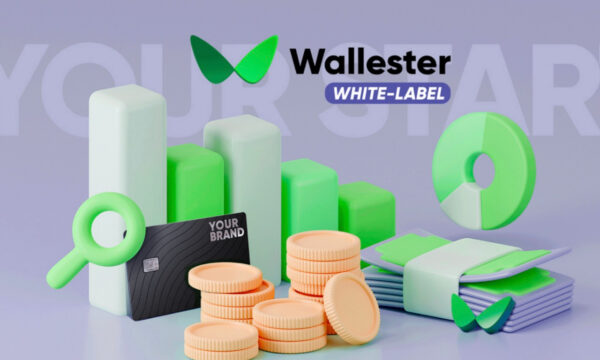Bitcoin is to blockchain what ChatGPT is to AI

As the poster child of the crypto class, Bitcoin is quite a popular financial instrument nowadays, notwithstanding the controversies and criticism it still faces. Traders and investors can buy Bitcoin p2p on crypto exchanges with the same ease with which they can purchase any other type of asset. But what’s truly curious about Bitcoin’s rise to fame is that the crypto ended up drawing all of the attention onto itself, overshadowing the altcoin gang and the very technology that enables its existence: the blockchain.
If we were to draw a parallel, we could say that Bitcoin is to blockchain what ChatGPT is to AI, in that Bitcoin, and crypto by extension, represent but an instance of a highly innovative technology that is capable of a lot more than facilitating a new form of money, although this in and of itself is a pretty impressive achievement. As such, Bitcoin’s tremendous success offers a glimpse into blockchain’s immense power and potential, just like ChatGPT gives us a sample of what artificial intelligence is able to accomplish.
In a similar vein, one could also say that the Bitcoin-blockchain relationship is comparable to what email is to the internet, what Facebook is to social media, what Amazon is to e-commerce, and the analogies could continue. The point is that the spotlight stealer may be the most prominent and widespread blockchain product, but it’s certainly not the only one. A lot of people have come to learn about blockchain through Bitcoin, and many still think that’s all there is to it. However, if you dig beyond the shiny crypto surface, you’ll come to find out that blockchain has a lot more to offer, and the numerous use cases it has developed over time prove it abundantly.
Since crypto’s birth, blockchain technology has taken a life of its own and branched out into several different directions across multiple industries and sectors, where it has already brought significant transformations. So, it seems only fair to do blockchain a bit of justice and explore some of its lesser-known but not less important applications.
A bit of context
We need to take a step back and look at blockchain’s history to understand how it developed and how it relates to Bitcoin. Blockchain had its big breakthrough in 2009 when Bitcoin was created, but the technology was a long time in the making. The earliest projects that ultimately led to the birth of blockchain as we know it today date back several decades, way before Bitcoin was even conceptualised.
Blockchain draws on several innovations that emerged over the years. One of them is Merkle Trees, which provides data encoding solutions for simple verification and enhanced security. Another component that played a key role in blockchain development is represented by David Chaum’s work on private key cryptography and decentralised databases, which resulted in the creation of the DigiCash company and the eCash project, the predecessor of current cryptocurrencies. His undertakings established the core principles and structures that would later be used to bring the blockchain concept to life.
Then, in 2008, Satoshi Nakamoto, whose real identity remains unknown to this day, published a whitepaper titled Bitcoin: A Peer-to-Peer Electronic Cash System that announced the arrival of Bitcoin and changed blockchain’s course forever. That’s when blockchain’s and Bitcoin’s trajectory started to merge. While many argue that the blockchain system developed by Chaum and that proposed by Nakamoto are one and the same, the Bitcoin project differs in that it introduces the proof-of-work consensus protocol, which is essential for verifying and validating transactions.
Long story short, Bitcoin became the main blockchain application and people started conflating the two together due to their association and shared history, but they designate completely different things and should not be confused with one another.
Blockchain – the technology of the future
Blockchain’s evolution didn’t stop with Bitcoin, so let’s look past the crypto craze and see what happened to blockchain afterward. In the years following Bitcoin’s emergence, people started to realise that blockchain’s core characteristics and features, such as immutability, decentralis
ation, distributed ledgers, consensus algorithms, transaction efficiency, transparency, and enhanced security, could be put to good use in other settings and domains.
That’s when the technology started to distance itself from Bitcoin and the crypto industry and began finding new use cases and expanding into multiple fields and areas of activity, such as:
- Smart contracts – many blockchains also boast smart contract functionality, which means they can be used to automate transactions and conclude agreements when certain predetermined conditions are met.
- Initial coin offerings – given their smart contract component, blockchains can also support the development of initial coin offerings (ICO), a solution that enables the raising of funds and capital for crypto projects in a safe manner.
- Supply chains and logistics – supply chains are complex systems that can also benefit from blockchain integrations to ensure traceability, streamline processes, increase efficiency and reduce expenses.
- Insurance – in the insurance realm, smart contracts can help providers track insurance claims and automate typical procedures, thus leading to better use of time and money, and greater efficiency.
- Voting – in electronic voting systems, blockchain can address issues related to validating voters’ identities and recording votes, guaranteeing a fair and transparent process.
This goes to show that blockchain applications are so varied and have so much potential that the technology can be seen as a force of positive change that will undoubtedly influence and shape our world in ways we can’t even begin to imagine.
Bottom line
Nowadays, blockchain is no longer just a distributed ledger that powers crypto assets. It’s a multifaceted and highly versatile technology that can be used in a myriad of ways, providing innovative solutions and bringing much-needed improvements in numerous sectors. There’s no Bitcoin without blockchain, but the opposite doesn’t apply. The technology exists outside its primary use case and will continue to live on even if cryptocurrencies cease to exist one day. With all the progress it has experienced in recent years and the immense promises it holds for upcoming developments, it seems like blockchain has a bright future ahead.
The editorial unit

























Facebook
Twitter
Instagram
YouTube
RSS